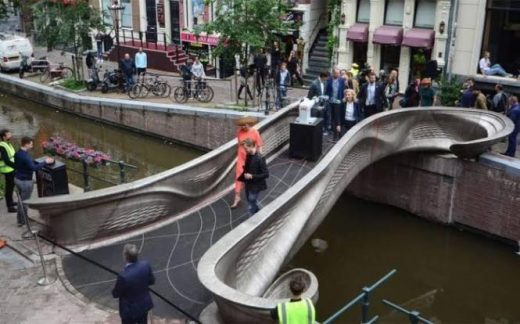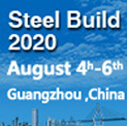By
Mr. S.L. Ghorpade
Under the guidance of Prof. A.B. Shendge
Dattakala Group of Institutions Faculty of Engineering, Swami – Chincholi (Bhigwan).
Abstract- The construction of tunnel is important for different purposes. They can be constructed for railways, roadways, pedestrian footways and can be built in hard rock, soft ground, river bed and are also used to convey Hydroelectric power, water stream, or as a sewer. The construction of Diversion Tunnel, Pressure Shaft, and Tailrace Tunnel to convey water is considered in this project. To identify Scheduling of different activities by various methods Network Diagram, C.P.M., P.E.R.T. and their cycle time is calculated. Scheduling for different activity is carried out with the help of Network Diagram & Primavera Software will be carried out in a project stage II. Study of Estimation for a Diversion Tunnel, Pressure Shaft, and Tailrace Tunnel by both methods. Excavation in heading and benching, Rock bolt support work, lining work is considered for cycle time and cost estimation calculation in Diversion Tunnel, Pressure Shaft, and Tailrace Tunnel. Estimation is also carried out by two methods. The comparison of two methods adopted for excavation work and estimation will be carried out in a project stage II.
Keywords- Scheduling, C.P.M., P.E.R.T., Gantt chart, Network Diagram, Estimation, Heading, Benching, Cycle time, Lining, Rock Bolts, Diversion Tunnel, Pressure Shaft, Tailrace Tunnel.
Read More
























sir pls help me i have a less time to ssc exam i want to prepare to exam how can i sir pls give me a overall summary and most important points from each subjets to crack easily in less time plsssssiam reuesting u sir plsss help me
I like this web site, I am M.E Structural Engg I had gain many informations from this web site.
HOW TO COMPUTE THE DEADLOADS ON RAILWAY BRIDGE?
I have completed my diploma in civil engg. . now wt to do …
What is Acceptable % of field dry density of soil
i am reading +11 in civil engineering and its easy now but i want to ask it is difficuli or not
first take weight of cube as w1(natural state as it contains air, moisture that is 3 phase), then immerse the cube in water for 24 hours after 24 hours take it out it take weight as w2(fully saturated), dry it it in oven for 10 minutes measure the weight as w3(dry), and amount of water=w2-w3.
unit weight of water=weight/volume from this relationship we can find volume of water which is nothing but volume of voids.
Details regarding establishment of civil engineering laboratory.
i am the student of civil engineering 1st semester some one kindly direct me about all test that we can do for cement and concrete. tell me about its names only
how to draw profile and cross-section of a road using autocad 2007??
I want to know about ‘authorised overlap’ in column, beam and slab reinforcement for measurement purpose.
Dear Mohith, with your question I presume that you are asking about lap length for measurement purpose only. it depends how the contract rate was. If the item description says rate includes all laps,chairs,ties no measurement lap shall not be considered. If not, normally it will be as mentioned in the drawing say 50d or 35 d. If drawing also not specifies anything (It has to be ), needs to be calculated as per IS 456 according to concrete grade. Hope this explanation is useful for you. regards, Suman.
This website has really very informative data and I had gained many pieces of information from this website.
Hi I have to make a techinal paper of 2500 words on Estimation & Costing Subject, to be submitted as my project for BTECH. Can anyone help me.
Excellent site you have here.. It’s difficult to find good quality writing like yours these days. I truly appreciate individuals like you! Take care!!
i am working on the slope stability analysis of permanent access road at Tarbela Dam Pakistan…..as a project on for MS (Geotech) Engg…..need your valuable suggestions please…..
Use TaLREN SOFTWARE FOR ANALYSIS.
i am preparing for competitive exam (GATE).So please ,can any one suggest some materials for me.
You should buy books especially for Gate other than that use your lecture notes. Most effective way as it appears to me is buy a copy of solved previous years GATE exams and practice and read all of them but dont go for answers directly do some brainstroming if you get struck it will consume some time but it will help alotnot only for GATE other exams too.
All the best!
You must also go for handbooks and text books especially for GATE published by Made Easy.
which of them having reinforcement bar is more, under or over reinforcement ?
technically it should be explained in different terms. Under reinforcement is where steel reaches yield strain at loads lower than the load at which the concrete reaches failure strain and over reinforcement is vice versa. In lay man terms Ast will be lesser than the balanced section in under reinforced, which means there will not be any sudden collapse.
Pls, I need an help on my project topic that say investigation and characterization on a solid waste disposal site and its impact on soil and water.
Which is top company for civil
In DMC method how excavated soil, slush & bentonite slurry is removed out
The topmost drill pipe is connected with a hose emerging from the vertical pump (installed in the bentonite) pit sending fresh bentonite slurry to the borehole through a fine opening in chisel and when the bore hole is filled to the brink, it flows back to the bentonite pit along with the mud through the artificial conduit. In this way the mud from the bore keeps on moving up the borehole and is directed to the bentonite tank.It is preferred to use fresh and clean water for the preparation of bentonite suspension as the minutest impurities may alter the properties of a suspension. In case, clean water is not available at the site, special additives such as Ferrosome lignosulphate in combination with soda ash, phosphates and flocculants are added.